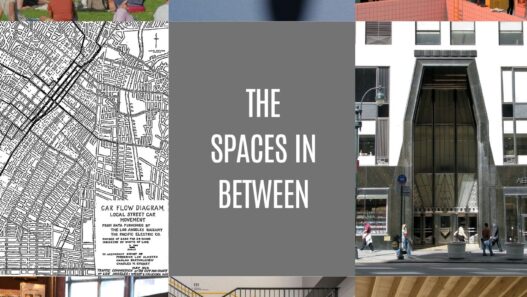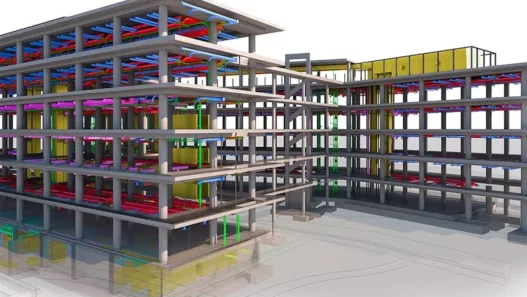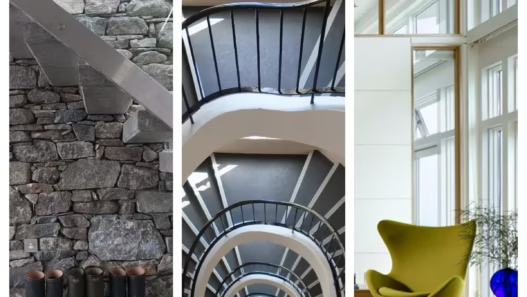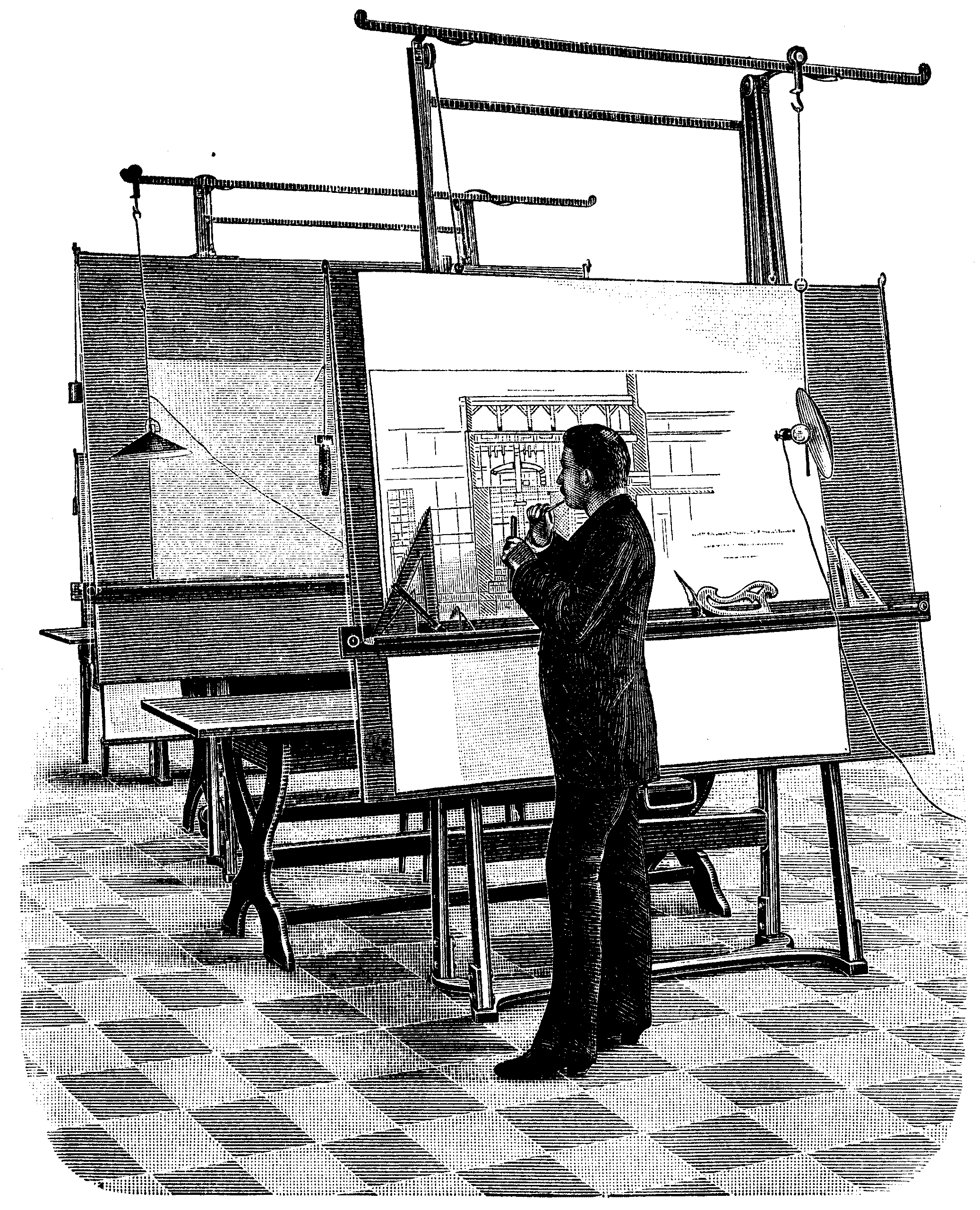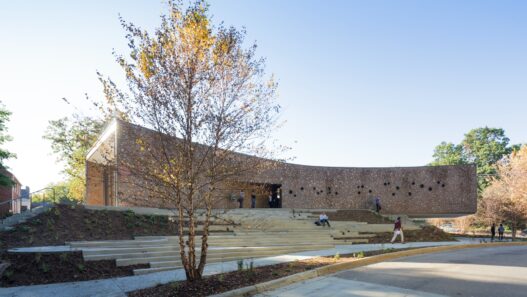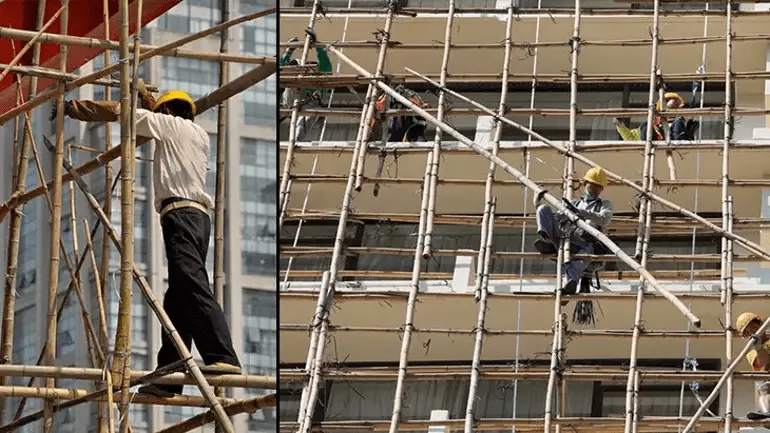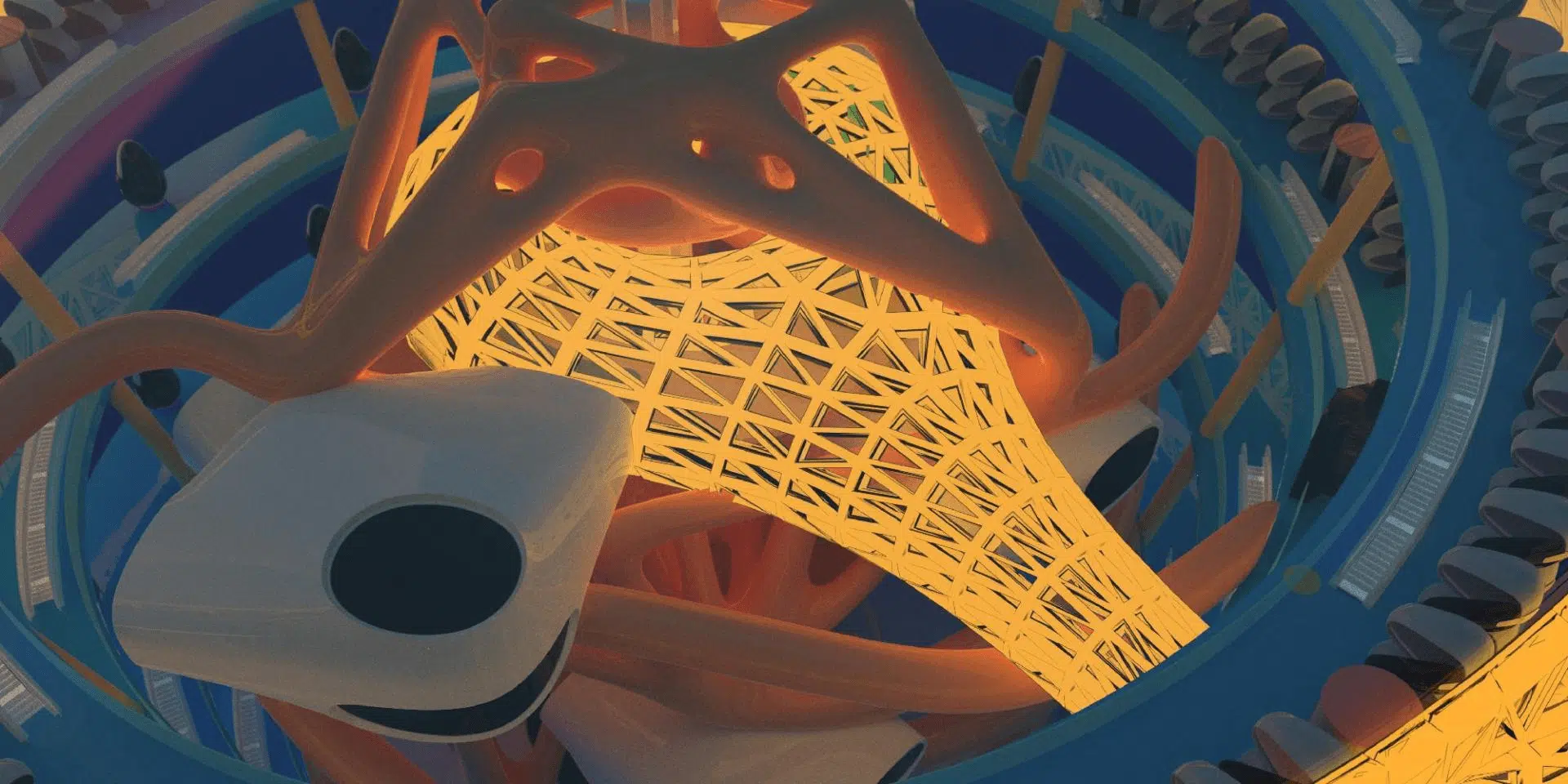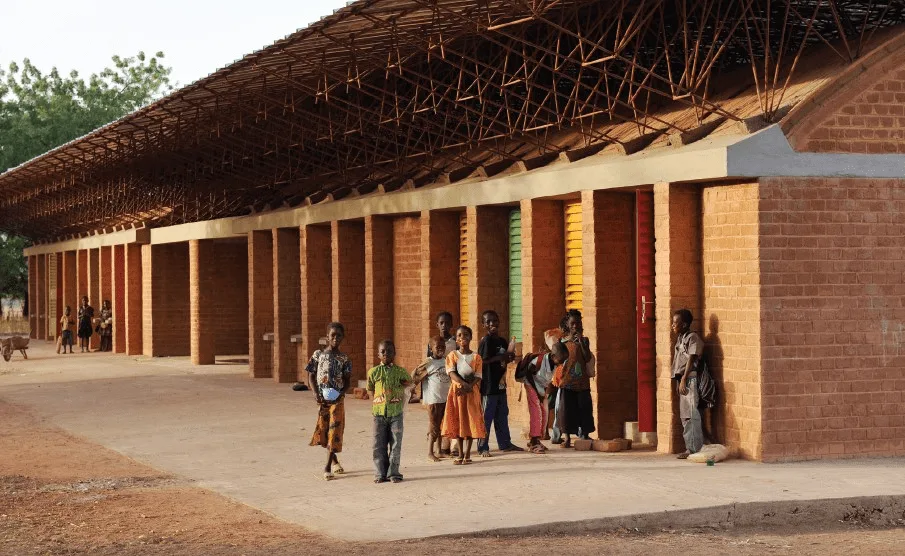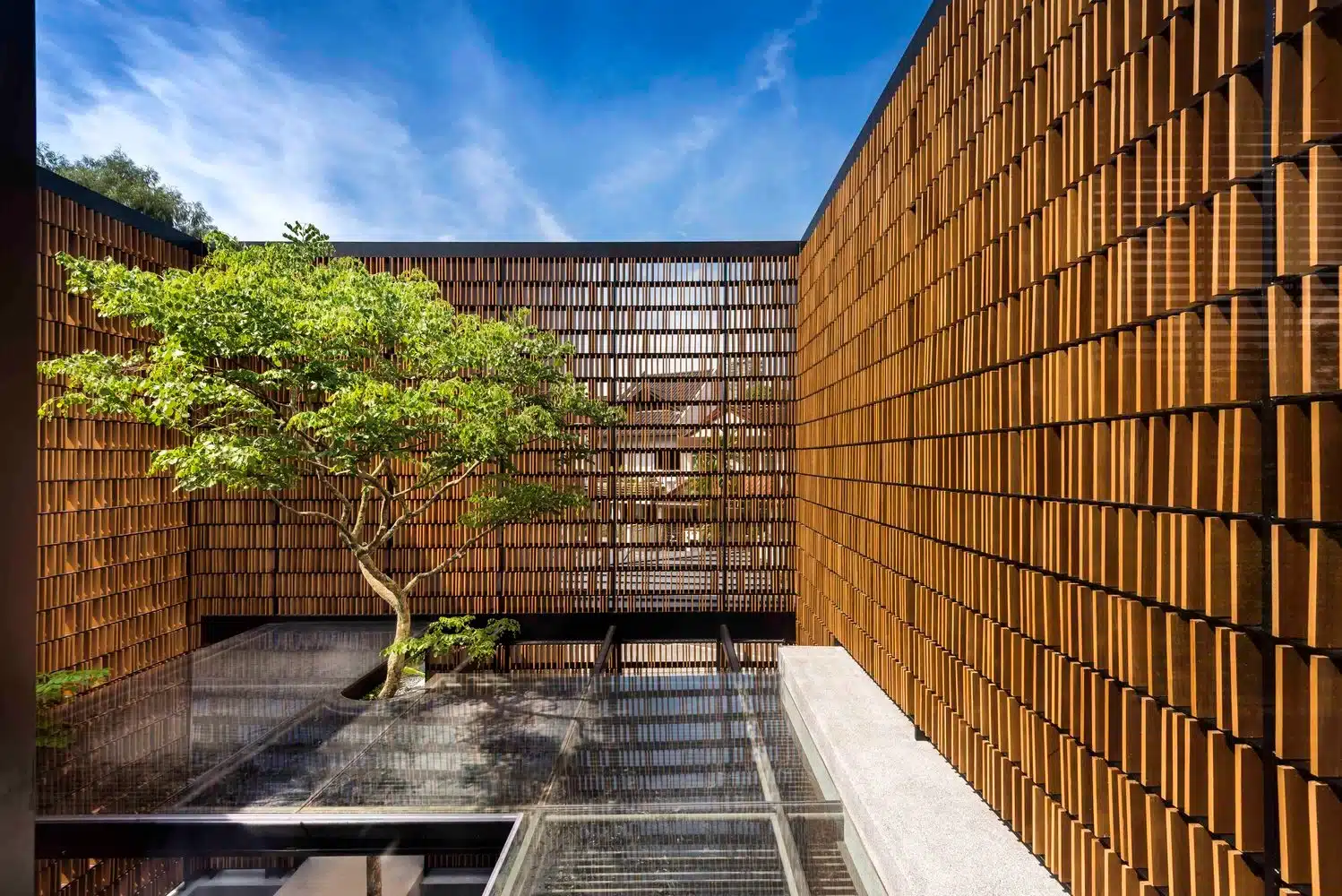Bamboo scaffolding is a fascinating construction technique that combines traditional craftsmanship with modern building needs. Originating in Asia, particularly China, this method utilizes the flexibility, strength and light weight of bamboo to create temporary structures that support workers and materials during construction projects. As urban landscapes evolve, bamboo scaffolds continue to play an important role, combining cultural heritage with contemporary construction practices.
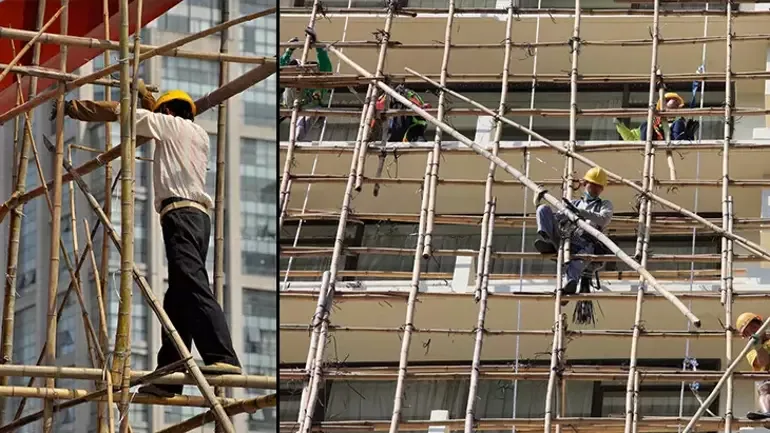
Definition and Overview
Bamboo scaffolding refers to the use of bamboo poles to create a frame that supports workers and materials during construction or renovation. This technique is characterized by intricate weaving and binding, creating complex structures that can often rise several stories. Bamboo is usually harvested locally, making it an environmentally friendly choice, and its natural properties allow for easy assembly and disassembly. This scaffolding method is not only practical, but also showcases the artistry of skilled artisans who have perfected the techniques over generations.
Historical Context
The use of bamboo scaffolding dates back centuries, especially in areas where bamboo is abundant. In China, they have been used for thousands of years, with historical records showing their use in the construction of temples, pagodas and other important structures. This technique reflects a deep understanding of local materials and environmental conditions. During the Ming and Qing dynasties, bamboo scaffolding became more widespread, allowing builders to create intricate designs that exhibit both functionality and aesthetic appeal. This rich history underlines the integral role of bamboo in the cultural and architectural evolution of East Asia.
Importance in Chinese Architecture
In Chinese architecture, bamboo scaffolding is not only a construction tool, but also a symbol of innovation and adaptability. It allows the construction of large, complex buildings while minimizing the environmental impact associated with more industrial scaffolding materials. The flexibility of bamboo allows it to suit a variety of architectural styles, from traditional courtyards to modern skyscrapers. Furthermore, the use of bamboo scaffolding reflects a philosophical approach to building that values harmony with nature, sustainability and craftsmanship. This technique has played an important role in preserving traditional architectural methods while meeting modern needs.
Comparison with Modern Scaffolding
When comparing bamboo scaffolding with modern scaffolding systems, several key differences emerge. Traditional metal scaffolding, while robust and reliable, often involves significant resource consumption and environmental impact. In contrast, bamboo scaffolding is lightweight, easy to transport and can be assembled without the need for heavy machinery. While metal scaffolding offers durability and weather resistance, the natural properties of bamboo provide unparalleled flexibility that can adapt to different building shapes and sizes. Furthermore, the renewable nature of bamboo contrasts sharply with the often non-biodegradable materials used in modern scaffolding, highlighting a growing trend towards sustainable construction practices.
Current Importance in Construction
Today, bamboo scaffolding remains important in the construction industry, especially in regions with a rich tradition of its use. In bustling cities such as Hong Kong, bamboo scaffolding is widely seen, demonstrating its ability to meet the demands of rapid urban development. Its cost-effectiveness, quick erection and minimal environmental impact make it an attractive option for builders. Moreover, as the world shifts towards sustainable practices, bamboo scaffolding is being rediscovered by architects and builders globally as a viable alternative to traditional scaffolding methods. This revival not only helps preserve cultural heritage, but also encourages environmentally responsible construction practices, making bamboo scaffolding a living testament to the blending of tradition and modernity in architecture.
Materials and Techniques
When it comes to architecture, the choice of materials and the techniques used to process them are fundamental not only to the structural integrity of a building, but also to its aesthetic and environmental impact. As a versatile and sustainable material, bamboo has gained importance in contemporary architecture. This section discusses the various types of bamboo, how they are prepared and processed, techniques used in assembly, important safety precautions and the latest innovations in bamboo scaffolding.
Types of Bamboo Used
Bamboo is an extraordinary plant belonging to the grass family and is found in several species, each with unique properties. Common species used in construction include Moso bamboo and Guadua bamboo. Known for its strength and rapid growth, Moso bamboo can reach heights of up to meters and diameters of centimeters. Its durability makes it an excellent choice for structural applications. On the other hand, Guadua bamboo, native to South America, is renowned for its flexibility and ability to withstand seismic forces, making it a favorite in earthquake-prone areas.
Another important species is Bambusa vulgaris, which is widely used in tropical regions due to its flexibility and availability. Each bamboo species has specific applications depending on its physical properties, making it essential for architects to choose the right species to suit their design goals and structural requirements. The diversity of bamboo not only increases aesthetic possibilities, but also supports environmentally friendly building practices.
Preparation and Processing of Bamboo
Bamboo’s journey from a natural resource to a building material requires careful preparation and processing. Freshly harvested bamboo is susceptible to pests and rot, so it undergoes various treatments to increase its longevity. One common method is boron treatment, which effectively protects bamboo against insects and fungi without compromising its structural integrity.
Another treatment is soaking the bamboo in a solution of water and preservatives that help prevent moisture absorption. This is especially important in humid environments where bamboo is more prone to rotting. Bamboo can also be heat treated to improve its strength and appearance. This treatment not only increases its durability but also brings out the natural beauty of the bamboo grain, making it a desirable choice for both structural and decorative elements in architecture.
Installation Techniques
The assembly of bamboo structures requires innovative techniques that capitalize on the unique properties of bamboo. Traditional methods usually involve notching and lashing, where bamboo poles are notched and secured with ropes or other binding materials to create connections. This method allows flexibility in design and is particularly useful in creating structures that can withstand dynamic loads.
Modern assembly techniques have introduced the use of connectors and fasteners that increase the speed and efficiency of construction. These metal or composite fasteners allow for precision joinery and can provide additional strength to the bamboo frame. Architects often adapt these techniques to the specific requirements of their projects, blending traditional craftsmanship with contemporary engineering principles to create innovative and durable structures.
Safety Precautions
Like any construction material, working with bamboo involves inherent risks and safety precautions are essential. Proper training for workers in the handling of bamboo is essential, as the material can splinter and cause injury if not handled with care. It is essential to wear protective equipment such as gloves and goggles during cutting and assembly operations.
It is also vital to ensure the structural integrity of bamboo structures. Engineers often conduct load tests to ensure that the assembled structure can support the intended loads. Regular inspections during and after construction can help identify potential problems early on. By prioritizing safety, architects and builders can reap the benefits of bamboo while minimizing risks to workers and building occupants.
Innovations in Bamboo Scaffolding
Bamboo scaffolding has a rich history, especially in Asia, where it has been used for centuries. However, recent innovations have elevated its status in modern construction. Engineers and architects are now exploring advanced design methodologies that incorporate bamboo scaffolding into larger architectural frameworks, improving both safety and efficiency.
One exciting development is the integration of modular scaffolding systems using prefabricated bamboo elements. These systems can be quickly assembled and disassembled, making them ideal for temporary structures or projects requiring fast construction times. Furthermore, the use of digital modeling and simulation tools allows for precision engineering of bamboo scaffolds, optimizing their design to specific building conditions.
The sustainability aspect of bamboo scaffolding cannot be overlooked. As the construction industry increasingly looks for eco-friendly alternatives, bamboo stands out due to its rapid growth and minimal environmental impact. By embracing innovations in bamboo scaffolding, the industry is not only honoring traditional practices, but also paving the way for a greener future in architecture.
As a result, the materials and techniques surrounding bamboo in architecture showcase a blend of tradition and innovation. From the selection of bamboo species to installation methods and safety precautions, every aspect plays a crucial role in utilizing this extraordinary material. As the architectural community continues to explore the potential of bamboo, it stands as a testament to sustainable building practices and creative design solutions.
Cultural Significance
Cultural significance refers to the importance of a particular element within a community or society and encompasses values, beliefs and practices. As a versatile and resilient plant, bamboo has deep cultural significance in various societies, particularly in China. Its uses go beyond mere functionality; it embodies deep-rooted symbolism, traditional practices and artistic expression, revealing how nature influences human creativity and heritage.
Bamboo Symbolism in Chinese Culture
In Chinese culture, bamboo is much more than a plant; it symbolizes strength, integrity and flexibility. Bamboo’s properties – its ability to bend without breaking and its rapid growth – reflect the fundamental virtues admired in Chinese philosophy. For centuries, scholars and poets have glorified bamboo in literature and art, often comparing it to the rigidity of pine, which is strong but less adaptable.
The importance of bamboo is also evident in traditional Chinese art, where it is often depicted in paintings and poetry. The “Four Gentlemen” in Chinese painting – the plum blossom, orchid, chrysanthemum and bamboo – represent ideals of virtue and character. This symbolism resonates deeply with the values of the Chinese people, representing a balance of strength and grace.
Role in Traditional Structure
Bamboo has played a very important role in traditional Chinese construction, especially in rural areas. Its lightweight yet strong structure makes it an ideal building material. In ancient times, bamboo was used to build houses, bridges and even temples. The flexibility of bamboo allowed architects to create structures that could withstand earthquakes and high winds, demonstrating both practicality and innovation.
The use of bamboo in construction is not limited to the past. In modern times, architects and builders are revisiting this traditional material, realizing its sustainability and minimal environmental impact. Bamboo grows quickly and can be harvested without harming the ecosystem, making it an environmentally friendly choice for contemporary building applications.
Impact on Artistic Expression
The influence of bamboo extends significantly into the realm of artistic expression. Artists have been inspired by the beauty of bamboo, creating works that reflect its delicate yet robust nature. Traditional ink paintings often feature bamboo, symbolizing virtues such as humility and perseverance.
In contemporary art, bamboo is used in a variety of media, from sculpture to installation art. Artists use bamboo to explore themes of nature, sustainability and cultural identity. This blend of tradition and modernity allows for a rich dialog between past and present, showing how a simple plant can inspire profound artistic expression.
Preserving Heritage Techniques
The preservation of heritage techniques related to bamboo is vital for maintaining cultural identity. Traditional crafts such as bamboo weaving and carpentry hold centuries of knowledge passed down through generations. In rural communities, artisans still practice these techniques and create functional and decorative products that reflect their cultural heritage.
Efforts to promote these traditional skills are crucial in a rapidly globalizing world. Workshops and cultural programs encourage younger generations to learn bamboo craftsmanship, ensuring that this rich tradition continues. By valuing and preserving these skills, communities maintain connections to their history and identity.
Bamboo Scaffolding in Modern Art
Bamboo scaffolding, a traditional construction method, has also found its way into modern art practices. Artists and architects use bamboo scaffolding not only for its structural benefits, but also as a tool for artistic exploration. In urban settings, bamboo scaffolding is often seen as a temporary yet essential element in construction, reflecting the dynamic nature of city life.
In art installations, bamboo scaffolding can create complex structures that challenge perceptions of space and utility. This innovative use of bamboo emphasizes its adaptability and reinforces its cultural significance. By integrating bamboo scaffolding into modern artistic expressions, the creators honor traditional practices while reimagining their purpose in contemporary society.
In conclusion, the cultural significance of bamboo in Chinese society is profound and multifaceted. It embodies resilience and flexibility, plays an important role in traditional structures, inspires artistic expression, preserves heritage techniques and adapts to modern art forms. As we continue to explore and appreciate bamboo, we realize its lasting impact on culture and creativity.
Case Studies on Iconic Buildings
Exploring iconic structures offers a fascinating insight into the history, culture and architectural creativity of societies. These buildings and monuments not only tell the stories of their time, but also influence modern architecture and urban planning. In this section, we take a look at some of the world’s most remarkable buildings, exploring their significance, their design and the lessons they teach.
Forbidden City
Located in the heart of Beijing, the Forbidden City stands as a testament to the splendor of Chinese imperial architecture. Built in the early 15th century during the Ming Dynasty, this vast complex served as the royal palace for emperors for almost as many years. Its name reflects its exclusivity; access was reserved for the emperor and his close associates, creating an air of mystery.
Architecturally, the Forbidden City is a marvel. Spanning acres, the city consists of nearly 1,000 buildings meticulously arranged along a north-south axis. Vibrant colors, intricate woodwork and the use of symbolic motifs enrich the aesthetic. Roofs with their distinctive yellow tiles symbolize imperial authority, while the layout follows the principles of feng shui, harmonizing with the natural environment.
Beyond its architectural splendor, the Forbidden City is a cultural treasure. It is home to a vast collection of art and historical artifacts that offer insights into Chinese history, philosophy and social structure. Today it is a UNESCO World Heritage Site, attracting millions of visitors each year who want to experience the splendor of China’s imperial past.
Great Wall of China
Stretching over 13,000 kilometers, the Great Wall is one of the most ambitious construction projects in human history. Originally built to protect the Chinese states from invasion, the Wall has evolved over the centuries, with different dynasties contributing to its construction and fortification. Depending on the region and period, the materials of the Wall varied from rammed earth and wood to brick and stone.
The Great Wall is not only a formidable defense mechanism, but also an extraordinary feat of engineering. Its design includes watchtowers and signal towers that allow for effective communication and surveillance. The wall winds through diverse landscapes, from arid deserts to rugged mountains, demonstrating the ability of its builders to adapt to the environment.
Today, the Great Wall is a symbol of national pride and resilience. It attracts millions of tourists who come to walk its historic paths and experience first-hand the history and determination of those who built it. The wall is a reminder of the importance of unity and strength in the face of adversity and inspires modern debates on conservation and cultural heritage.
Contemporary Urban Projects
As cities around the world grapple with rapid urbanization, contemporary urban projects reflect innovative approaches to design and sustainability. One prominent example is the High Line in New York City, the transformation of a former elevated railroad into a vibrant public park. This project highlights the importance of reusing existing structures, creating green spaces in urban environments and encouraging community engagement.
Architects and urban planners are increasingly focusing on sustainable design principles. Projects such as Bosco Verticale in Milan feature residential towers planted with trees and plants that promote biodiversity and improve air quality. These vertical forests not only beautify the urban landscape, but also contribute to residents’ well-being by providing nature in a crowded city.
Contemporary urban projects often emphasize inclusivity and aim to create spaces that appeal to diverse populations. The redevelopment of waterfront areas in cities such as Toronto and Sydney illustrate how urban spaces can be revitalized to encourage community interaction and recreational activities. Such projects demonstrate the potential of architecture to solve global problems while improving quality of life.
Restoration Projects
Restoration projects play a crucial role in preserving historic architecture for future generations. The restoration of the Colosseum in Rome is an important example. Standing for nearly 2,000 years, this iconic amphitheater has undergone extensive renovations to address structural issues and improve visitor safety. The work has not only preserved its splendor, but has also led to a better understanding of its historical significance.
In addition to structural restoration, these projects often involve meticulous research to preserve the authenticity of the original design. The restoration of Notre-Dame Cathedral in Paris following the devastating fire in 2019 aims to honor the craftsmanship of medieval builders while integrating modern safety features. This balance between conservation and innovation is crucial to preserving the cultural integrity of such landmarks.
Restoration projects also serve as educational platforms that inform the public about historic craftsmanship and architectural techniques. By breathing new life into these buildings, we can foster a greater appreciation of our shared heritage and inspire future generations to value and preserve their cultural history.
Lessons from Historic Buildings
Studying historic buildings offers invaluable lessons that resonate over time. One important lesson is the importance of adaptability. Structures such as the Pantheon in Rome have survived over the centuries thanks to their robust design and ability to adapt to changing uses over time. This principle encourages contemporary architects to consider the longevity and versatility of their designs so that they can evolve with societal needs.
Another lesson is the integration of cultural significance into architectural design. The intricate carvings and symbolic motifs found in buildings such as the Alhambra in Spain show how architecture can reflect the values, beliefs and artistic expressions of a culture. Modern architects are increasingly embracing this idea and striving to create buildings that reflect local identity and history.
Finally, historic buildings remind us of the importance of craftsmanship and materials. The use of local materials and traditional building techniques often results in architecture that is in harmony with its surroundings. This approach not only promotes sustainability, but also fosters a sense of place that connects people to their surroundings.
By studying these iconic structures, we can gain insights that will shape our approach to modern architecture and ensure that it is not only functional, but also meaningful and enduring.
Environmental Impact
The built environment has a profound impact on our planet, shaping not only the landscapes we inhabit, but also the ecosystems that surround us. As architects and builders increasingly focus on sustainability, it is essential to understand the environmental impacts of various materials and construction practices. This section explores the environmental impacts of materials such as bamboo, comparing them to traditional materials such as steel, analyzing their carbon footprint and the role of environmentally friendly construction practices. Finally, we will look at the future of sustainable practices in the construction industry.
Sustainability of Bamboo as a Material
Bamboo is generally recognized as one of the most sustainable building materials available today. This remarkable plant grows rapidly, with some species reaching maturity in just three to five years, where traditional hardwoods take decades. Its ability to regenerate quickly makes it a renewable resource that can be harvested without depleting the ecosystem. Bamboo also absorbs significant amounts of carbon dioxide as it grows, helping to mitigate climate change.
In terms of its structural capabilities, bamboo is incredibly strong and lightweight, making it an attractive alternative for a variety of construction applications. Its flexibility allows it to withstand natural disasters such as earthquakes, where rigidity can lead to catastrophic failures in buildings made from more traditional materials. In addition, bamboo can be used in a variety of ways, from scaffolding to flooring and even entire structures, demonstrating its versatility and potential for sustainable architecture.
Comparisons with Steel Scaffolding
When comparing bamboo to steel scaffolding, several important differences emerge that highlight the environmental advantages of bamboo. Steel, while extremely strong and durable, requires a large amount of energy to extract, process and transport. This process contributes significantly to its carbon footprint. Steel production also involves mining, which can lead to habitat destruction and soil degradation.
In contrast, bamboo cultivation has a much lower environmental impact. It can be grown in a variety of climates without the need for pesticides or fertilizers, and its extensive root system helps maintain soil health. Furthermore, bamboo scaffolds are generally lighter and easier to handle than steel, reducing the energy required for transportation and assembly on site. This makes bamboo not only an environmentally friendly alternative, but also a practical one, especially in areas where bamboo is readily available.
Carbon Footprint Analysis
Examining the carbon footprint of different materials reveals sharp contrasts in their environmental impact. Bamboo has a significantly lower carbon footprint than steel. When bamboo is harvested and used in construction, it sequester carbon dioxide, effectively trapping it for the life of the structure. This natural process contributes to a reduced overall carbon footprint compared to the emissions associated with steel production.
In the construction industry, where emissions from materials contribute significantly to global warming, the use of bamboo can be a game changer. Research shows that structures built with bamboo can sequester more carbon than they emit over their lifecycle. This shift is not only helping to combat climate change, but also encouraging a more sustainable approach to building that prioritizes the health of our planet.
Role in Environmentally Friendly Construction
The role of bamboo in eco-friendly construction extends beyond its material properties. Bamboo represents a philosophy that values harmony with nature and encourages designs that minimize environmental degradation. Architects and builders are using bamboo in increasingly innovative ways, creating structures that blend seamlessly with their surroundings.
In countries such as China and India, for example, bamboo is used not only for its durability but also for its aesthetic qualities. Buildings designed with bamboo often reflect local cultural values and traditions, promoting a sense of identity while supporting sustainable practices. Furthermore, the use of bamboo in construction can stimulate local economies, provide jobs and improve skills in communities that rely on this resource.
Future Prospects for Sustainable Practices
Looking to the future, the prospects for sustainable practices in construction are promising. As awareness of climate change and environmental degradation grows, demand for environmentally friendly materials such as bamboo is likely to increase. Innovations in technology are also paving the way for more efficient processing and utilization of bamboo, making it even more accessible to builders around the world.
There is also a growing movement to integrate sustainable practices into building codes and regulations. Governments and organizations are beginning to recognize the importance of reducing the environmental impact of construction, which could lead to increased support for materials such as bamboo. As the construction industry evolves, the combination of traditional knowledge and modern techniques will drive the adoption of sustainable materials, ensuring that our built environments are not only functional but also ecologically responsible.
As a result, understanding the environmental impact of construction materials is crucial to building a sustainable future. Bamboo stands out as a champion of eco-friendly practices, offering a renewable, versatile and low-carbon alternative to traditional materials such as steel. As we move forward, adopting sustainable practices in architecture and construction will be vital to the health of our planet and future generations.
The Future of Bamboo Scaffolding
Bamboo scaffolding, a traditional construction method particularly prevalent in Asia, is enjoying renewed interest as the world seeks sustainable building practices. Its lightweight, flexible and strong properties make it an attractive alternative to traditional scaffolding materials. As we look towards the future, it is crucial to explore trends, challenges, integration with modern engineering, global adoption and a visionary perspective for bamboo scaffolding.
Trends in Construction Technology
The construction industry is undergoing a rapid evolution focused on technology, sustainability and efficiency. Innovations such as Building Information Modeling (BIM), augmented reality and drone technology are reshaping the way projects are planned and executed. In this context, bamboo scaffolding is being reconsidered not only as a traditional method but also as a viable modern alternative.
As construction technology advances, so does the focus on environmentally friendly materials. Bamboo, with its rapid growth and renewability, fits perfectly with this trend. Companies are now experimenting with hybrid scaffolding systems that combine bamboo with other materials to increase durability while maintaining sustainability. This trend marks a shift towards integrating traditional methods with the latest technology, ensuring that bamboo scaffolding remains relevant in contemporary construction practices.
Challenges Faced by Bamboo Scaffolding
Despite their benefits, bamboo scaffolds face several challenges that need to be addressed before they can thrive in modern construction. One of the key challenges is the perception of bamboo as an inferior material compared to steel and aluminum. Many construction professionals are still hesitant to adopt bamboo due to misconceptions about its strength and longevity.
Furthermore, variability in bamboo quality can pose risks. Different types of bamboo have different properties and without standardized practices for bamboo selection and processing, the integrity of the scaffold could be compromised. Furthermore, the lack of regulatory frameworks in many regions can hinder widespread adoption. Overcoming these challenges requires a concerted effort to educate industry stakeholders and provide guidelines on the safe and effective use of bamboo scaffolds.
Integration with Modern Engineering
The integration of bamboo scaffolds with modern engineering practices can create a synergy that improves both safety and sustainability. Engineers and architects are exploring how bamboo can be incorporated into contemporary designs, not only as a scaffolding material, but also as a structural component. This shift requires a rethinking of engineering principles that allow for innovative designs that capitalize on the natural properties of bamboo.
Recent projects have demonstrated the successful integration of bamboo scaffolding to support complex structures while minimizing environmental impact. In places like Hong Kong, bamboo scaffolding has been used in combination with modern construction techniques, demonstrating the adaptability of bamboo. This integration paves the way for a future where bamboo is recognized not only for its utility in scaffolding, but as a key player in sustainable architecture.
Global Adoption and Adaptation
The global landscape for bamboo scaffolding is diverse, with varying degrees of adoption in different regions. In countries such as China, India and parts of Southeast Asia, bamboo scaffolding continues to be widely seen and valued for its cost effectiveness and ease of use. However, adoption of bamboo scaffolds in Western countries is still in its infancy.
A cultural exchange of knowledge and practices is needed to facilitate global adoption. Training programs and workshops can help spread awareness about the benefits and techniques of bamboo scaffolding. Furthermore, partnerships between local craftsmen and international builders can foster innovation and adaptation by adapting bamboo scaffolding techniques to suit different environmental conditions and regulatory frameworks.
Future Vision
The future of bamboo scaffolding is bright with potential developments that could redefine its role in construction. As sustainability becomes a central theme in construction practice, the natural properties of bamboo are likely to be exploited more extensively. Imagine a world where bamboo scaffolds not only support buildings but also enhance their aesthetic appeal, with architects creatively integrating bamboo into their designs.
Innovative research could lead to improved processes and processing methods that increase the durability and safety of bamboo scaffolds. With the support of technology, we could also see the development of smart scaffolding systems where sensors monitor the structural integrity of bamboo scaffolds in real time.
In conclusion, the vision for bamboo scaffolding is a harmony between tradition and innovation. By embracing its historical roots while adapting to modern needs, bamboo can play an important role in shaping a sustainable future for construction. As we move forward, the journey of bamboo scaffolding will be a testament to the power of combining age-old wisdom with contemporary creativity.
Discover more from Dök Architecture
Subscribe to get the latest posts sent to your email.



